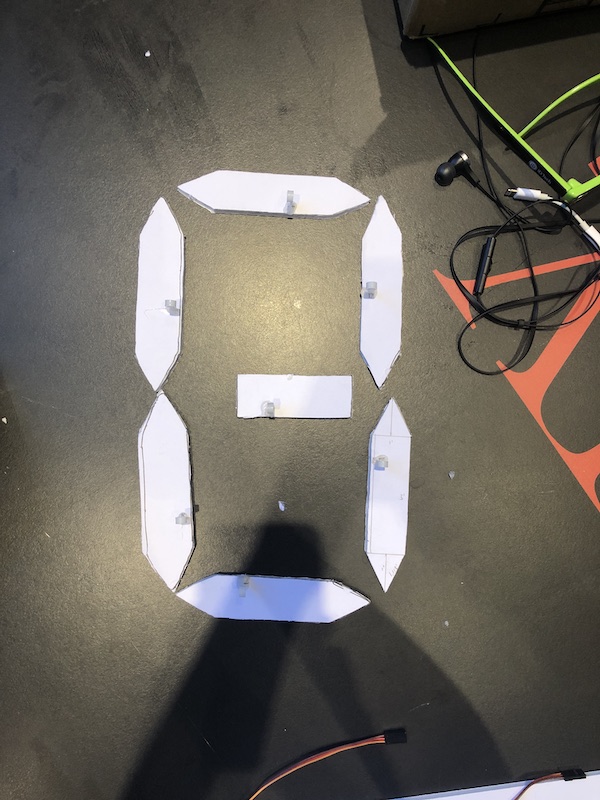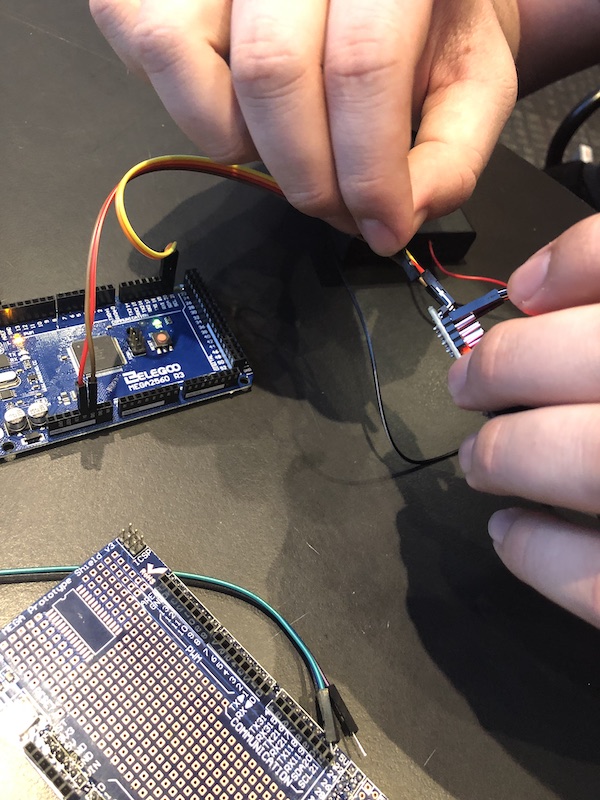7-seg Display
A life-size 7-segment display visualizes the output of 2 artificial nueral networks
Key concepts/tech used: Arduino, p5.js, serial communication | In collaboration with: Mikian Musser
The Idea
My friend, Mikian, created an artificial neural network to recognize hand-written digits from the MNIST dataset. We thought it would be cool to visualize what the neural network outputs on a real-life seven segment.


Visual representation of Mikian's neural network
Building the 7-seg
Communicating Through Serial
The p5.js serialport library was used to communicate between p5 program and Arduino. It works as follows:
- 1. The p5 program sends data to a p5 serial control application through a web socket
- 2. That application then sends the information it recieves to the computer's serial
- 3. The information in the serial is read by the Arduino
- 4. That data is interpreted and triggeres a certain binary-coded decimal combination to be triggered by the servos
Since we were sending in 1 second intervals, the serial port was sometimes filled with random information. To prevent this from affecting our visualization, we performed a simple error check only accepting input if they're between 0-9
setInterval(
function(){
console.log(numSent);
serial.write((numSent)+"");
}
,1000);
}
incomingByte = Serial.read();
incomingByte = incomingByte - '0';
delay(100);
if (incomingByte <= 9 && incomingByte>= 0) {
setNum(incomingByte);
}
Sending and recieving in p5.js and Arduino
Encoding the data
int BCDToSS[16][7] = {
{1,0,0,1,0,0,1}, // 0
{0,0,0,0,1,1,1}, // 1
{1,0,1,1,0,1,0}, // 2
{1,0,0,1,1,1,0}, // 3
{0,0,0,0,1,0,0}, // 4
{1,1,0,1,1,0,0}, // 5
{1,1,0,1,0,0,0}, // 6
{1,0,0,0,1,1,1}, // 7
{1,0,0,1,0,0,0}, // 8
{1,0,0,1,1,0,0}, // 9
{1,0,0,0,0,0,0}, // A
{0,1,0,1,0,0,0}, // B
{1,1,1,1,0,0,1}, // C
{0,0,0,1,0,1,0}, // D
{1,1,1,1,0,0,0}, // E
{1,1,1,0,0,0,0} // F
};
A basic decimal to binary-coded decimal encoder was used to translate the integer recieved by the Arduino into either on or off commands for each of the 7 servos. As a result, we could loop through 0-F.
Visualizing Neural Networks
We tested the final hardware on 2 different neural networks!

